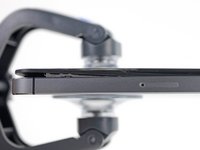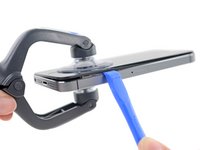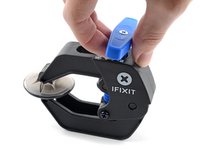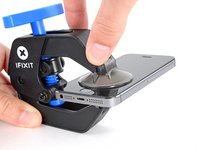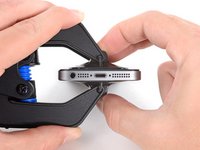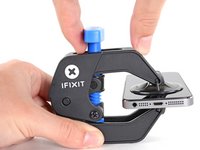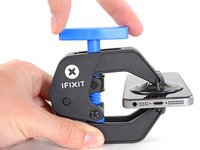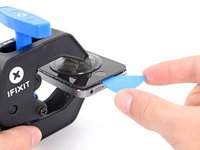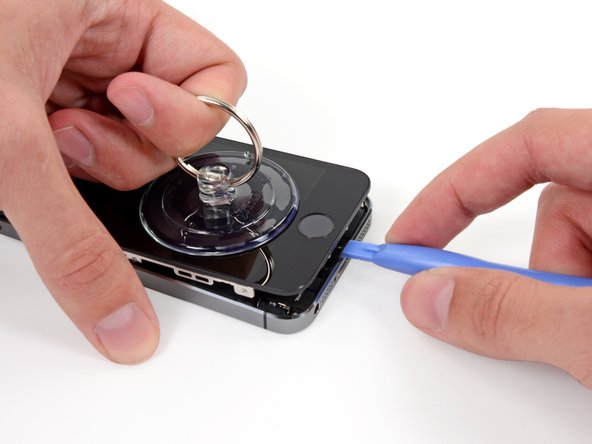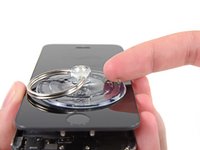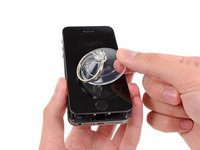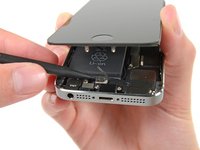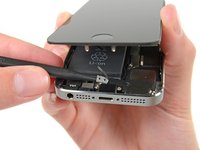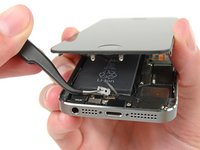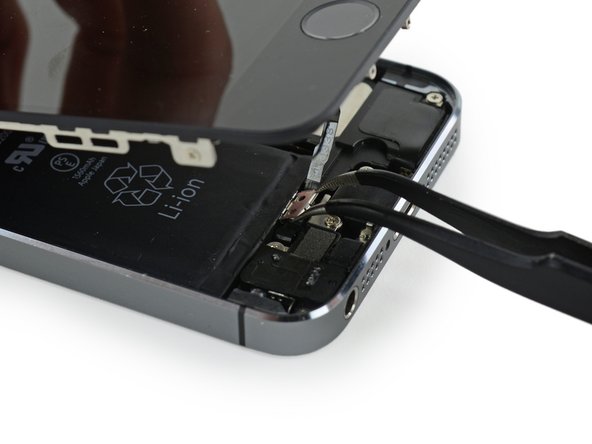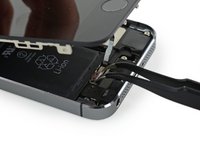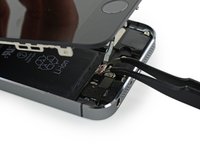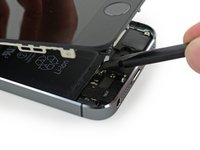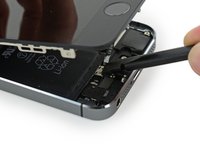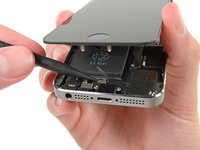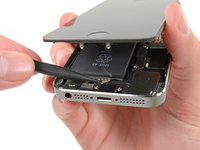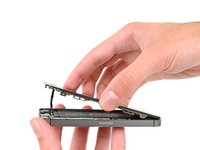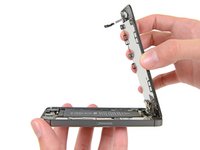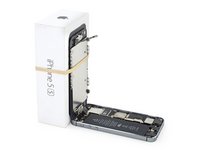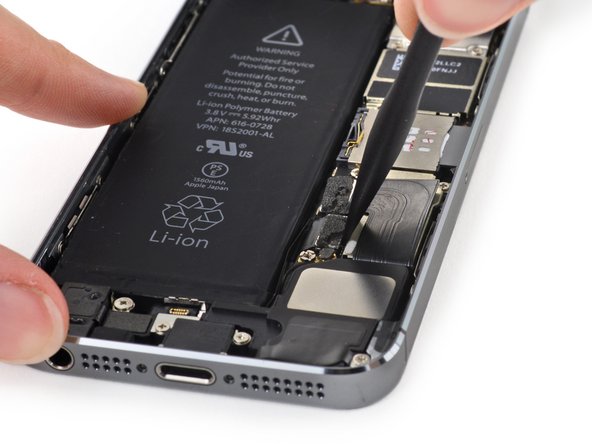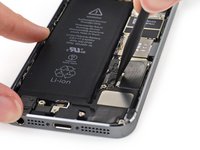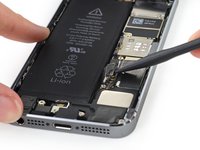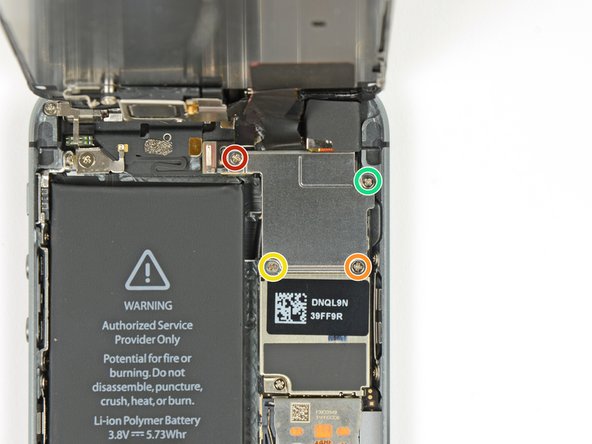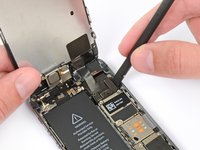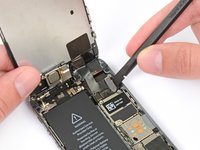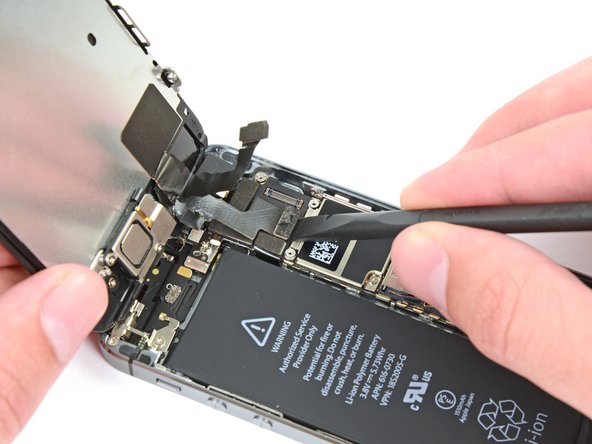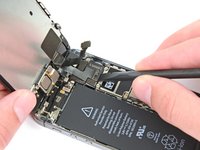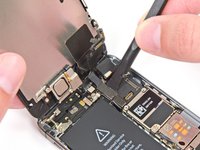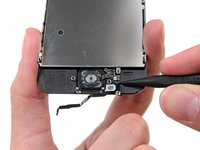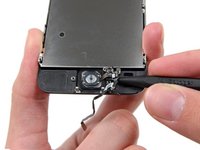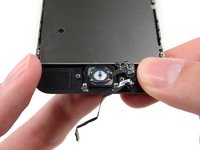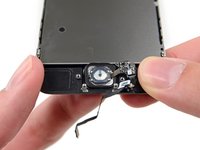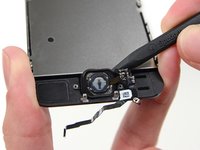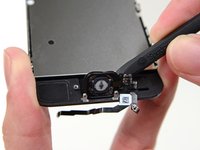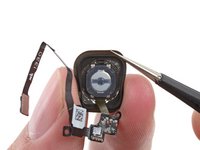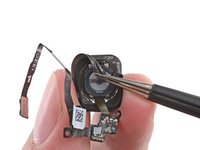crwdns2915892:0crwdne2915892:0
Use this guide to replace the home button assembly in your iPhone SE. The home button is compatible with the iPhone 5s part.
Please note that only the phone's original home button assembly will be capable of using the Touch ID functionality. Installing a new home button will only restore ordinary home button functions, not the Touch ID features.
crwdns2942213:0crwdne2942213:0
crwdns2936621:0crwdne2936621:0
-
-
Power off your iPhone before beginning disassembly.
-
Remove the two 3.9 mm Pentalobe screws from either side of Lightning connector.
-
-
-
If your display glass is cracked, keep further breakage contained and prevent bodily harm during your repair by taping the glass.
-
Lay overlapping strips of clear packing tape over the iPhone's display until the whole face is covered.
-
-
-
Regardless of the tool you use, you need to be sure you pull up the entire display.
-
If the glass begins to separate from the plastic, as shown in the first image, slide a plastic opening tool between the plastic frame and the metal phone body to pry the metal clips out of the case.
-
-
crwdns2935267:0crwdne2935267:0Clampy - Anti-Clamp$24.95
-
Pull the blue handle backwards to unlock the Anti-Clamp's arms.
-
Slide the arms over either the left or right edge of your iPhone.
-
Position the suction cups near the bottom edge of the iPhone just above the home button—one on the front, and one on the back.
-
Squeeze the cups together to apply suction to the desired area.
-
-
-
Pull the blue handle forwards to lock the arms.
-
Turn the handle clockwise 360 degrees or until the cups start to stretch.
-
Insert an opening pick under the screen when the Anti-Clamp creates a large enough gap.
-
Skip the next two steps.
-
-
-
If you don't have an Anti-Clamp, use a single suction cup to lift the front panel:
-
Press a suction cup onto the screen, just above the home button.
-
-
-
While holding the iPhone down with one hand, pull up on the suction cup to slightly separate the home button end of the front panel from the rear case.
-
With a plastic opening tool, gently pry the edges of the rear case down, away from the front panel assembly, while you pull up with the suction cup.
-
-
-
Pull the plastic nub to release the vacuum seal on the suction cup.
-
Remove the suction cup from the screen.
-
-
crwdns2935267:0crwdne2935267:0Tweezers$4.99
-
Open the phone just enough to reveal the metal bracket covering the home button cable.
-
Only the phone's original home button assembly will be capable of using the Touch ID functionality. If you rip the cable, installing a new home button will only restore ordinary home button functions, not the Touch ID features.
-
Use the tip of a spudger to push the bracket free and remove it with tweezers.
-
-
-
-
Use the tip of a spudger to pry the home button cable connector up out of its socket.
-
-
-
Once the connector has been released, pull the home button end of the assembly away from the rear case, using the top of the phone as a hinge.
-
Open the display to about a 90º angle, and lean it against something to keep it propped up while you're working on the phone.
-
Add a rubber band to keep the display securely in place while you work. This prevents undue strain on the display cables.
-
-
-
Remove the two 1.6 mm Phillips #000 screws securing the metal battery connector bracket to the logic board.
-
-
-
Remove the metal battery connector bracket from the iPhone.
-
-
-
Use the flat end of a spudger to gently pry the battery connector up from its socket on the logic board.
-
-
-
Remove the following screws securing the front panel assembly cable bracket to the logic board:
-
One 1.7 mm Phillips #000 screw
-
One 1.2 mm Phillips #000 screw
-
One 1.3 mm Phillips #000 screw
-
One more 1.7 mm Phillips #000 screw
-
-
-
Remove the front panel assembly cable bracket from the logic board.
-
-
-
Use a spudger or a fingernail to disconnect the front-facing camera and sensor cable.
-
-
-
Finally, disconnect the digitizer cable connector.
-
-
-
Remove the front panel assembly from the rear case.
-
-
-
Unscrew the single captive Phillips #000 screw securing the home button cable.
-
-
-
Fold the home button cable down, out of the way of the home button bracket.
-
-
-
Remove the two 1.4 mm Phillips #000 screws from the home button bracket.
-
-
-
Remove the home button bracket from the display assembly.
-
-
-
Wedge the the tip of a spudger underneath the home button cable assembly.
-
Gently work the spudger underneath the cable to separate the home button cable from the front panel assembly.
-
-
-
Gently push the top left corner of the home button up away from the front panel.
-
-
-
Peel the home button the rest of the way off of the display by prying gently with a spudger.
-
-
-
Remove the home button assembly from the front panel.
-
-
crwdns2935267:0crwdne2935267:0Tweezers$4.99
-
Using a set of tweezers, gently peel the gasket off of the home button.
-
-
-
Thread the gasket off of the ribbon cable.
-
To reassemble your device, follow these instructions in reverse order.
To reassemble your device, follow these instructions in reverse order.
crwdns2935221:0crwdne2935221:0
crwdns2935229:096crwdne2935229:0
crwdns2947412:020crwdne2947412:0
Is there a reason why the Touch ID feature will not work after replacing the home button? Wouldn't all the programming that has to do with it be in the software in the phone?
Unfortunately the Touch ID is built into each home button and paired to that specific logic board. This is why it is extremely important to pay attention to that flex cable. Good Luck.
Eddie -
I unfortunately tore my home button cable while replacing the battery. If I purchased a used fair condition operational phone, and transferred the motherboard and the home button to my mint condition case, shouldn’t the Touch ID work?
schuft -
@schuft That’s a fairly involved repair, but yes! Should work fine if done carefully. Remember to verify that Touch ID works correctly on the new/donor phone before disassembling anything.
Is it the same as the 53 error iPhone 6 problem?










